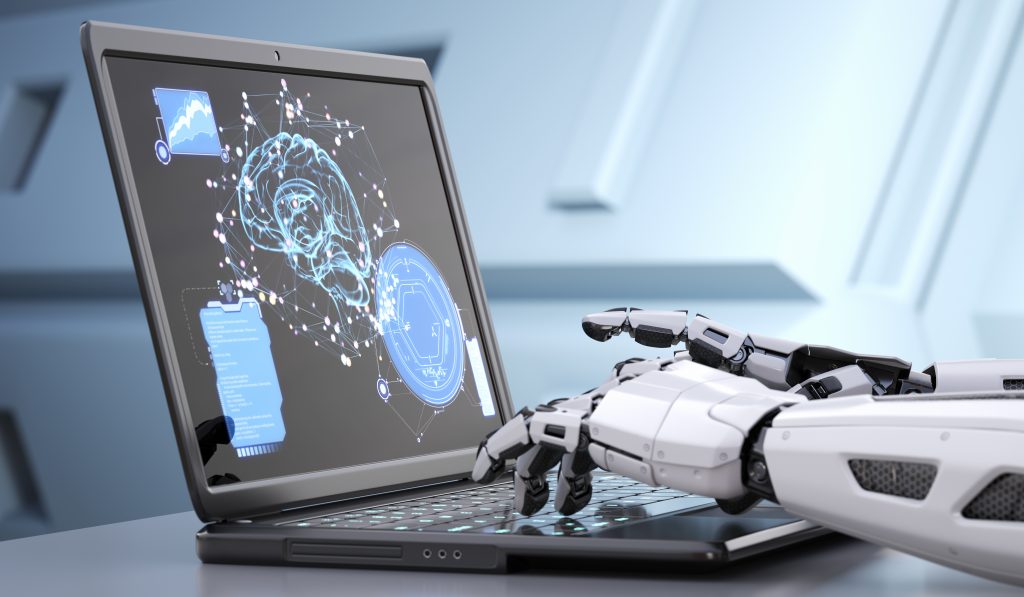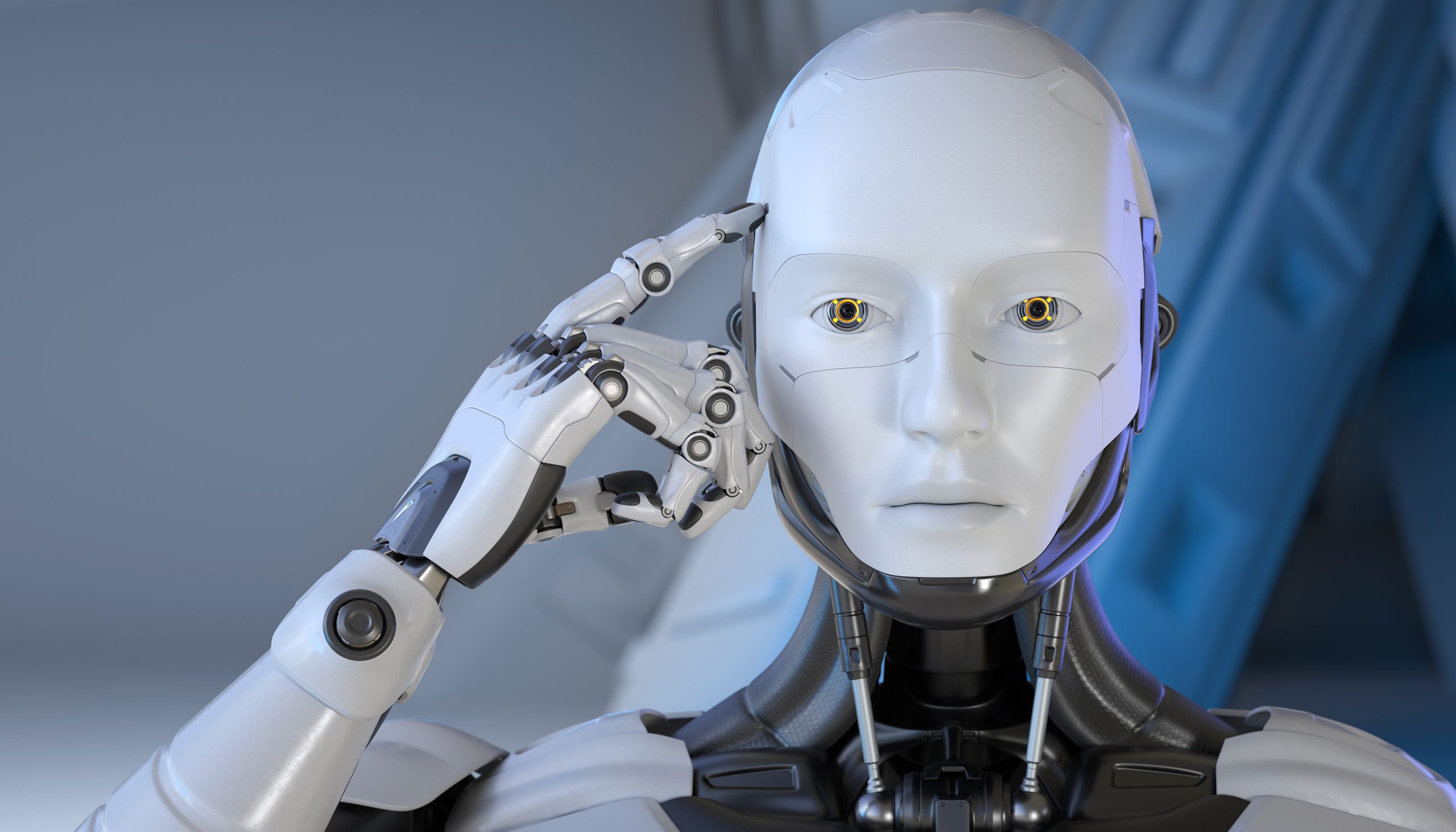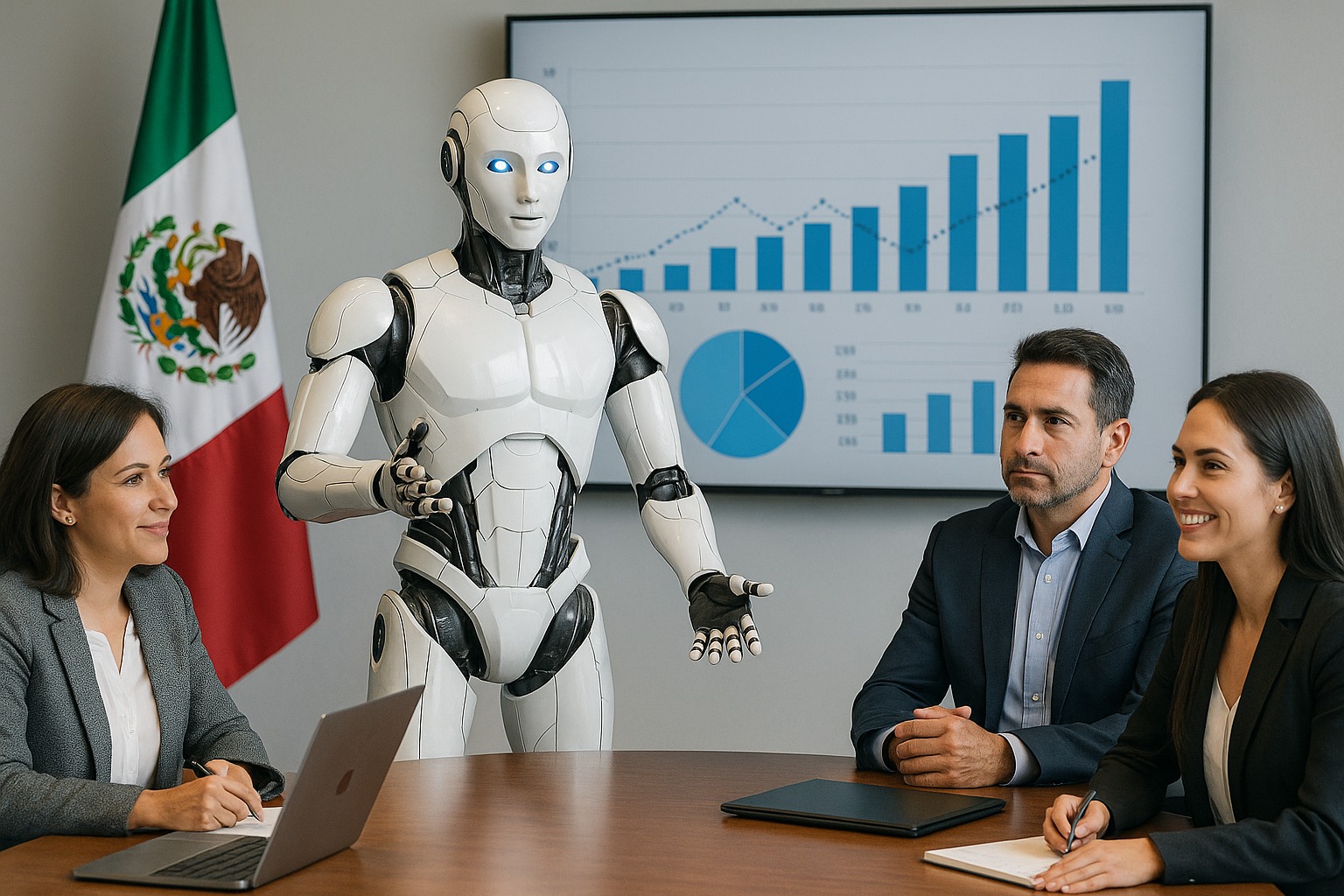OPPORTUNITY OR RISK
Artificial intelligence and robotics are a reality and are transforming how we work, learn, and interact. Their potential to improve our lives—and those of future generations—is undeniable. Used responsibly, they can enhance everyone’s quality of life. Misused, they risk deepening inequalities and creating dangerous dependencies.
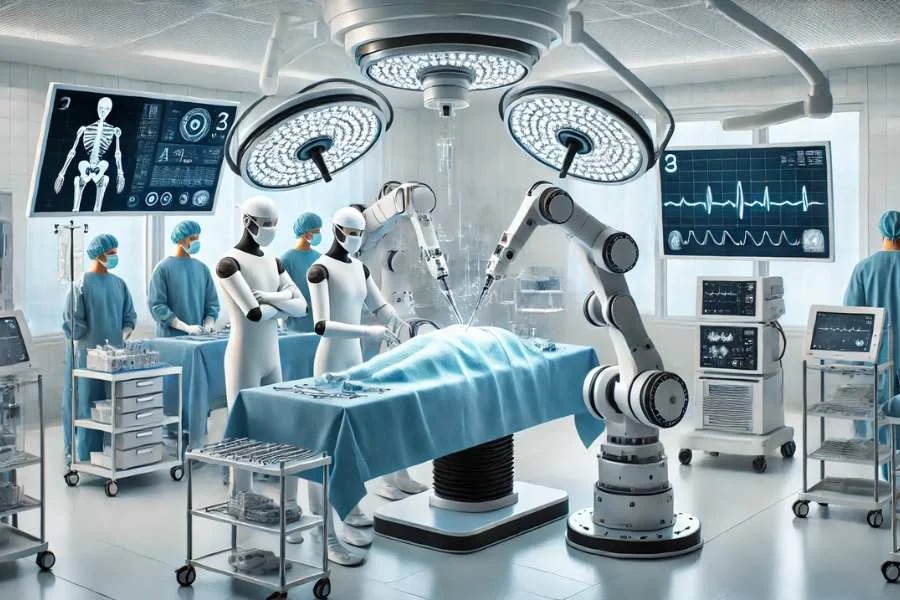
KEY CONCERNS
1. Job Loss
Machines can take over repetitive tasks like packaging, answering calls, or processing invoices. This pressures companies to replace human workers with tireless, lower-cost systems, leaving many without clear alternatives.
2. Knowledge Gap
Those unfamiliar with digital tools may be excluded from jobs and projects. The market now demands proficiency in smart platforms and basic data analysis; otherwise, professionals risk becoming irrelevant.
3. Overdependence on Technology
We rely on GPS for directions and calculators for simple math. By delegating everything to devices and apps, we lose basic skills that are hard to recover when systems fail.
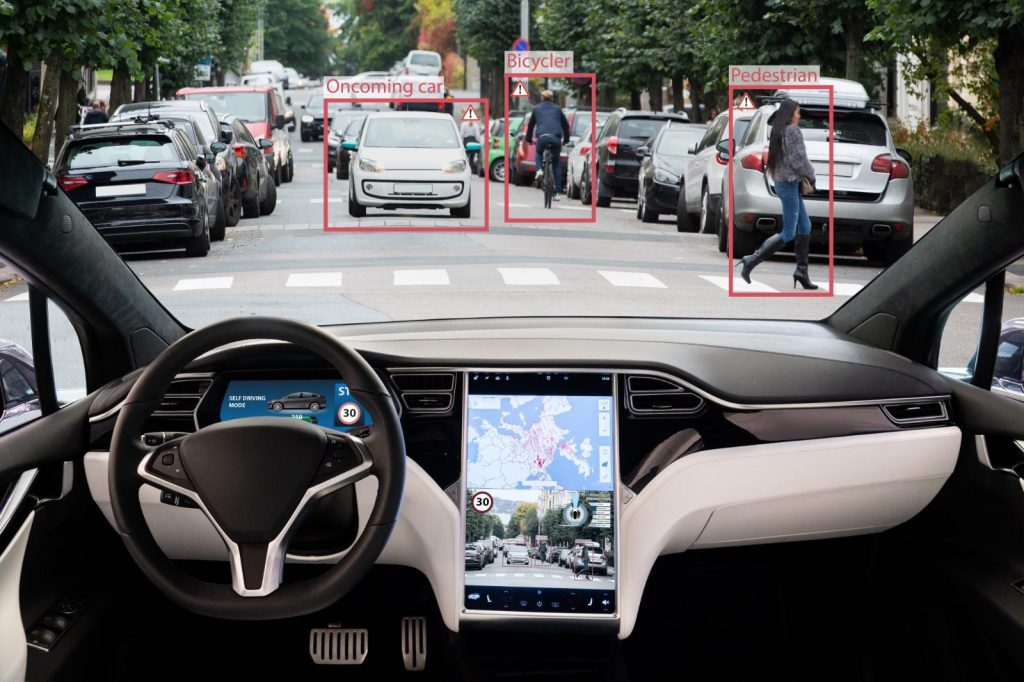
4. Constant Monitoring and Loss of Privacy
Cameras, sensors, and apps collect data about our movements, shopping habits, and preferences. That data is often sold or used without us knowing who sees it or for what purpose.
5. Opaque Decision-Making (“Black Box”)
We often don’t understand why an algorithm denies a loan, selects a candidate, or recommends a medical treatment. Without transparency, we can’t challenge or correct these automated decisions.
6. Lack of Human Touch
Chatbots and robots replace personal interaction in hospitals, stores, and service centers. While efficient, they lack empathy and judgment—vital in sensitive or critical situations.
7. Cyberattack Risks
Industrial robots, drones, and connected vehicles can be hacked. A successful attack can paralyze operations, compromise data, and endanger lives.
8. Hidden Environmental Impact
Data centers consume large amounts of energy, and chip manufacturing depends on minerals sometimes sourced under unsustainable conditions. Training a single advanced AI model can generate tons of CO₂.
9 . Governments
To face disruptions in the economy, labor, and privacy, governments must design clear laws and launch training and support programs that protect rights, develop digital skills, and build trust among citizens and investors—thus attracting innovation and high-value jobs.
SHORT-TERM DANGERS (1–2 YEARS)
- Rushed Implementation
- What happens: Companies deploy AI systems and robots without properly training staff.
- Consequence: Frequent errors, service interruptions, employee and customer frustration.
- Example: A warehouse introduces package-sorting robots without training staff, leading to delayed shipments and damaged goods.
- What happens: Companies deploy AI systems and robots without properly training staff.
- Massive Data Leaks
- What happens: Poorly configured platforms expose sensitive data (health, finances, location).
- Consequence: Cybercriminals gain access for extortion, theft, or data sale.
- Example: A health app fails to encrypt its databases, allowing unauthorized access to medical records.
- What happens: Poorly configured platforms expose sensitive data (health, finances, location).
- Reinforced Bias
- What happens: Automated systems make decisions based on biased historical data.
- Consequence: Vulnerable groups face worse conditions or exclusion, perpetuating inequality.
- Example: A hiring software rejects résumés from certain neighborhoods or demographics without objective reasoning.
- What happens: Automated systems make decisions based on biased historical data.
- Critical Dependency on a Single System
- What happens: Homes or organizations rely on one virtual assistant or robot for essential tasks.
- Consequence: If it fails, people can’t perform those tasks due to lack of practice or backup plans.
- Example: An office prints invoices solely through an automated system—if it crashes, there’s no tested contingency plan.
- What happens: Homes or organizations rely on one virtual assistant or robot for essential tasks.
- Governments
- Danger: Downplaying the disruption caused by new technologies and falling behind.
- Danger: Downplaying the disruption caused by new technologies and falling behind.
LONG-TERM THREATS (5–10 YEARS)
- Economic Inequality
- Possibility: Those who control technology monopolize business and income globally.
- Impact: Underdeveloped countries, small businesses, and workers survive on minimal income, unable to compete.
- Possibility: Those who control technology monopolize business and income globally.
- Erosion of Everyday Skills
- Possibility: We forget how to cook without smart appliances, drive without assistance, or do basic math.
- Impact: Loss of autonomy; during outages or crises, we struggle to cope independently.
- Possibility: We forget how to cook without smart appliances, drive without assistance, or do basic math.
- Critical Systems Without Human Oversight
- Possibility: Power plants, water systems, or transportation networks are managed solely by AI.
- Impact: A technical failure could cause widespread blackouts or accidents with no skilled personnel to respond.
- Possibility: Power plants, water systems, or transportation networks are managed solely by AI.
- Automated Arms Race
- Possibility: Military drones and robots act independently, making attack decisions.
- Impact: Conflicts spiral beyond human control, causing massive collateral damage.
- Possibility: Military drones and robots act independently, making attack decisions.
- Automated Social Control and Censorship
- Possibility: Governments or corporations use AI to monitor behavior, score citizens, and limit freedoms.
- Impact: Loss of privacy and possible repression via algorithms that label certain groups as “risky.”
- Possibility: Governments or corporations use AI to monitor behavior, score citizens, and limit freedoms.
- Unprepared Governments
- Possibility: Struggles to regulate or oversee advanced technologies, leading to slow processes, corruption, outdated laws, and brain drain.
- Impact: Education, healthcare, and other services collapse due to underinvestment; talent flees to countries offering better training and job conditions. Young people migrate to work in foreign data centers or automated factories.
- Possibility: Struggles to regulate or oversee advanced technologies, leading to slow processes, corruption, outdated laws, and brain drain.
HOW TO PREPARE
- Ongoing Training
Continuously update your computer and digital skills. Ensure your team masters essential tools before adopting new ones. - Privacy Awareness
Before using an app or platform, ask what data it collects, who accesses it, and how it’s protected.
Demand clarity—if you don’t understand the fine print, seek alternatives or expert advice. - Preserve Manual and Analog Skills
Practice cooking, mental math, and navigating with paper maps. Keep alive the abilities that tech may replace. - Design Contingency Plans
Set protocols for technical failures: data backups, alternative processes, and support teams.
Run crisis simulations (e.g., power outages, cyberattacks) and train your team accordingly. - Engage in Public Discourse
Join forums and debates on tech regulation, ethics, and sustainability.
Support laws demanding algorithm transparency and data protection. - Promote Ethics and Sustainability
Evaluate the social and environmental impact of every AI or robotics project.
GOVERNMENT ACTIONS
- Innovate Responsibly
- Set clear boundaries: Before adopting automated systems, define internal policies to protect labor rights and privacy.
- Train staff: Make sure everyone understands not just how to use the tech, but its workplace implications.
- Monitor outcomes: Regularly assess whether tools are achieving goals without harming people.
- Set clear boundaries: Before adopting automated systems, define internal policies to protect labor rights and privacy.
- Advance Human Development
- Ongoing training: Offer practical courses in basic digital skills and critical thinking.
- Reskilling and upskilling: Create clear paths for learning new tasks or improving existing ones.
- Mentorship: Pair technical training with guidance from internal or external mentors.
- Ongoing training: Offer practical courses in basic digital skills and critical thinking.
- Ensure Transparency and Accountability
- Explainable algorithms: Require vendors to clarify in plain language how decisions are made and reviewed.
- Independent audits: Regularly assess systems for bias and errors.
- Data access: Define who can view what data, for how long, and offer correction or deletion mechanisms.
- Explainable algorithms: Require vendors to clarify in plain language how decisions are made and reviewed.
- Strengthen Resilience
- Backup plans: Document fallback procedures for outages, hacks, or server failures.
- Manual support: Keep analog methods (paper forms, manual calculations) and train staff accordingly.
- Regular testing: Simulate emergencies to validate and refine protocols.
- Backup plans: Document fallback procedures for outages, hacks, or server failures.
- Integrate Ethics and Sustainability
- Impact measurement: Track energy use and carbon footprint for each project.
- Responsible sourcing: Choose vendors with fair labor and efficient practices.
- Social commitment: Evaluate how technologies affect vulnerable communities and promote fair benefit sharing.
- Impact measurement: Track energy use and carbon footprint for each project.
- Foster Dialogue and Participation
- Open forums: Create spaces (online or offline) for companies, government, and civil society to shape tech policies.
- Media literacy: Train clients and employees to spot misinformation and AI-generated content.
- Complaint channels: Set up accessible ways to report issues and suggest system improvements.
- Open forums: Create spaces (online or offline) for companies, government, and civil society to shape tech policies.
- Build a Shared Vision for the Future
- Set measurable 2030 goals, such as:
- % of staff trained in digital tools
- Energy use reduction targets
- % of staff trained in digital tools
- International collaboration: Partner with global organizations to share best practices and avoid unfair gaps.
- Annual reviews: Track progress and adjust plans based on tech and societal changes.
- Set measurable 2030 goals, such as:
- Government’s Role
- Draft flexible, clear laws: Protect personal data, regulate algorithm use, and adapt to new tech.
- Invest in education and talent: Launch national training programs for all ages and skill levels.
- Supervise ethics and security: Regularly audit AI and robotics for fairness and safety.
- Fund innovation: Provide subsidies and tax breaks for research into emerging technologies.
- Encourage public-private partnerships: Support pilot labs and innovation centers in health, energy, and mobility.
- Deploy secure digital infrastructure: Upgrade networks and data centers to meet cybersecurity standards.
- Monitor impact and refine policies: Track economic, social, and environmental outcomes and update strategies accordingly.
- Draft flexible, clear laws: Protect personal data, regulate algorithm use, and adapt to new tech.
CONCLUSION
Success depends not only on technology but on the human decisions surrounding it. With ethics, education, and a shared vision, we can harness AI and robotics to improve our lives—without sacrificing our autonomy or collective well-being.
